Both photography and videography have come a long way when it comes to consumer products. We used to only rely on DSLRs when we talk about serious imaging, but today, really capable shooters made their way to phones and could fit in your pockets. To further stretch that out, these cameras are now mounted on remote-controlled drones and have been helping both enthusiasts and professionals get breathtaking images.
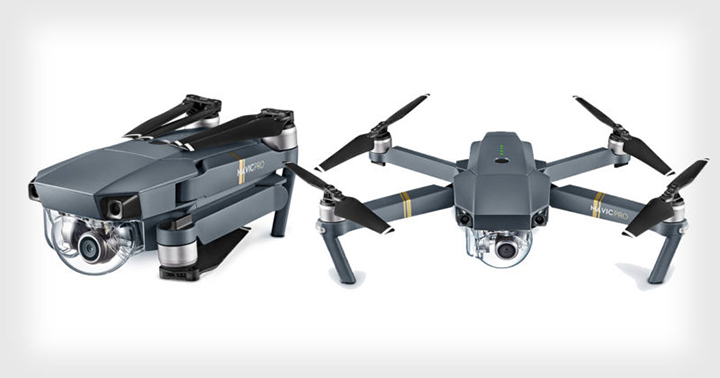
DJI has made its mark in the aerial imaging scene with their products like the Phantom and Inspire series. The Mavic Pro, so far, is the most portable of them all but it doesn’t mean it skimped on important features. Join us and let’s take a closer look and get familiar with this new drone.
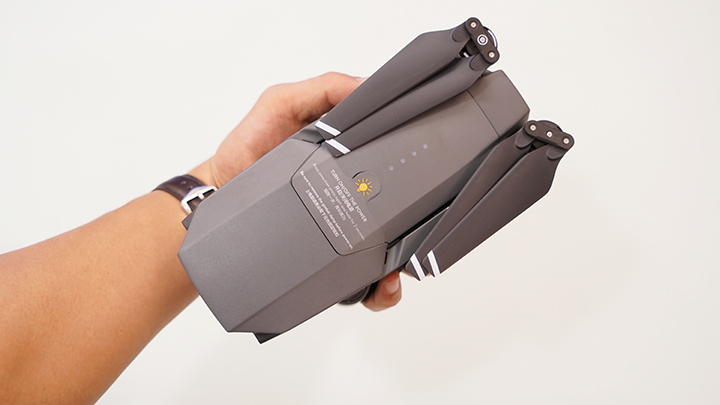
The Mavic Pro, when folded up, is so small that one could easily grab it using one hand. The body is made of plastic to make things light but has a high-quality feel to it and a solid, reinforced sound when you tap it.
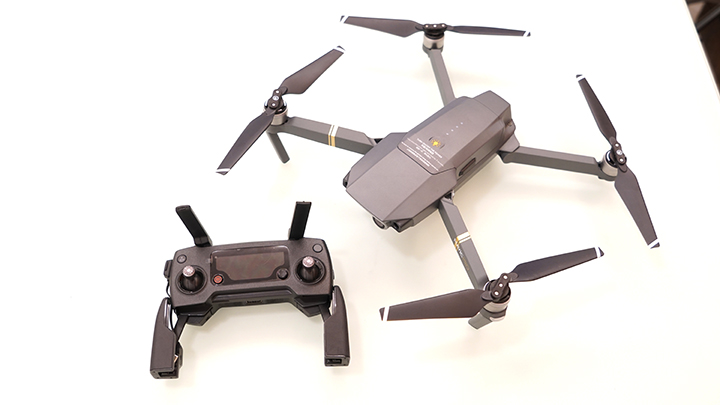
Its arms fold out to get ready for flight. Same is the case for its remote controller that demands users to first bring out the mount for the phone as well as the antennas.
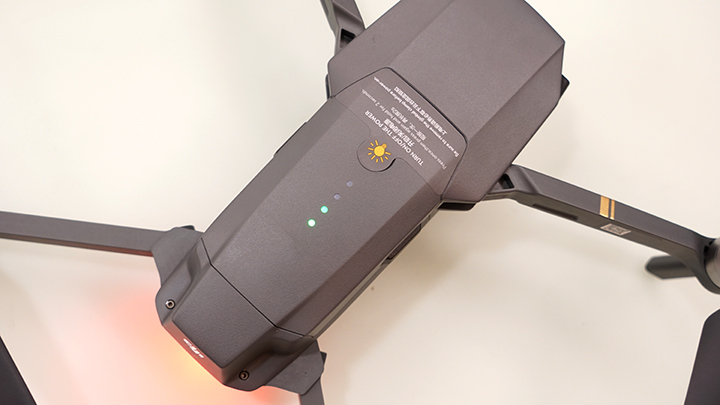
Checking out the drone itself, its power button is seen up top (under the light bulb sticker). There are four LED lights that indicate the battery level of the device so you don’t always need to check the remote or the app.

Speaking of power, its battery is actually where the power button and LED lights are. Press the two buttons on the side and the pack ejects itself for charging. DJI calls this the Intelligent Flight Battery with 3,830mAh capacity.
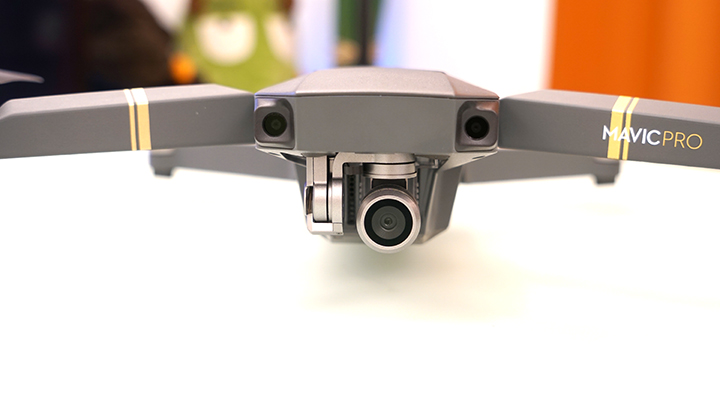
Up front is the camera (1/2.3-inch CMOS sensor) that’s mounted on a gimbal to ensure stable and smooth footage. Also seen here are two front-facing sensors just above the camera for its obstacle avoid feature.
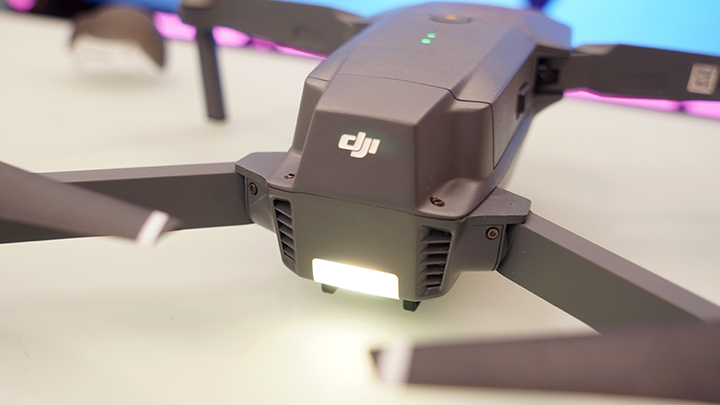
At the rear is where the company’s logo is printed just above the status indicator. It flashes different colors (green, yellow, and red) that should tell you when the drone is ready to fly, if you need to double check a setting, or when something is preventing it to take-off, among other things.

On its right side is a flap that reveals the microSD card slot as well as the toggle to tell the drone whether you’ll control it via the app or with its dedicated remote control.
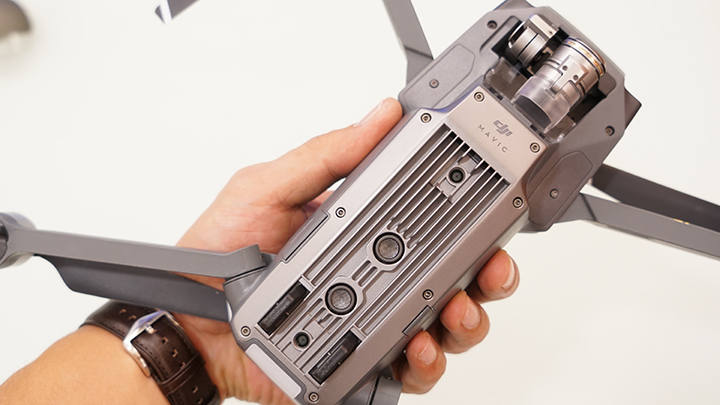
Meanwhile, underneath, we have another set of sensors for to make sure that its landing spot is clear. These also help make for an easy and automatic landing.
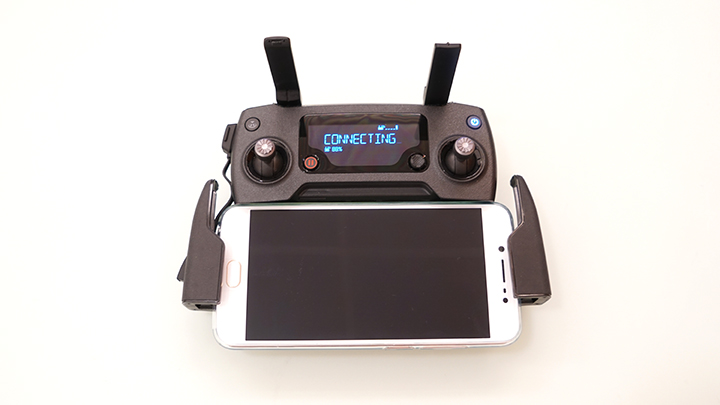
Jumping to the controller, it looks like your typical controller for consoles with its dual joysticks and trigger buttons up top. There’s the mount for attaching smartphones that fold out and can accommodate handsets of different sizes. It’s actually pretty flexible since we could use it for small devices like an iPhone 5S or even a 5.7-inch LG V10 and make it still fit like a glove. We’ve actually seen some users attach an iPad Mini to the controller and they say it still holds firmly.

It has a built-in display that shows important details like altitude, distance, drone status, battery, and more. On the upper left corner is the Return to Home button while the opposite end is where the power button solely for the controller is. There is a Flight Pause button at the bottom of the display for emergency braking and a 5D button that users could assign functions to.

The joysticks don’t feel cheap and have good resistance to them.
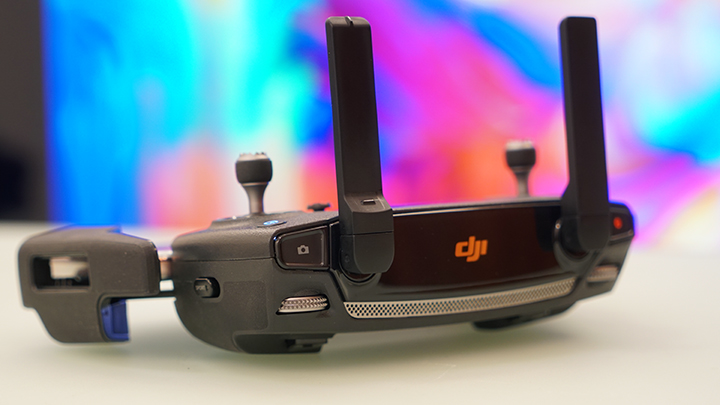
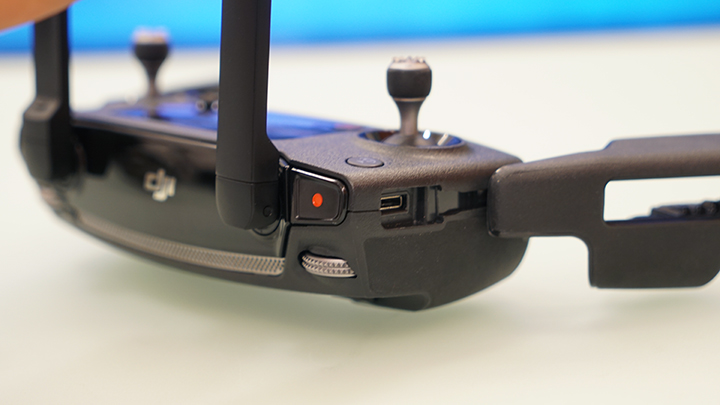
Up front, there are trigger buttons on both sides as mentioned earlier. One is a shutter button while the other has the video record button. There are also rotating wheels situated below the right and left buttons for exposure and camera tilt, respectively.


The package includes three microUSB cables with different ends. There’s microUSB to microUSB, microUSB to Lightning, and microUSB to USB Type-C to accommodate connections for different devices to see what the camera sees and play with shooting modes. These individually attach to the left side and go straight to the mount for instant connectivity.

There’s a USB port at the rear of the RC which is also used for connecting devices for live preview. While there’s already one on the side, this is for bigger displays like tablets — making it possible to have a separate viewfinder standing on a table while controlling the drone.
Additionally, there are two extra buttons at the underbelly of the remote control called the C1 and C2. Users could assign specific functions to them like Center Focus, Camera Settings, Look Down, etc. for quick, one-press actions while flying.
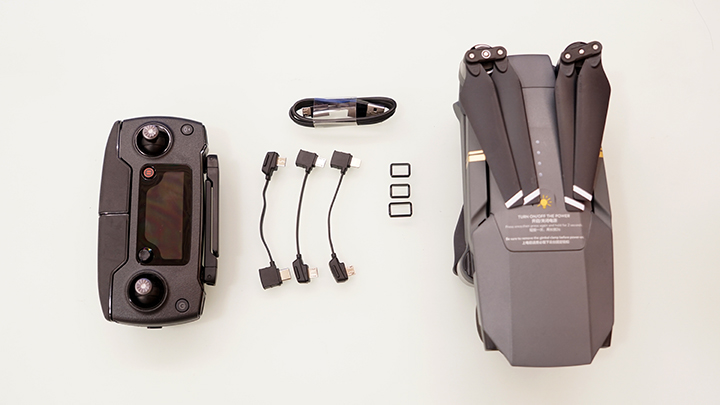
Apart from the charging cables, the Basic Mavic Pro package consists of the drone, remote control, three cables with different tips, and an extra piece of a spare propeller in case you damage or break one. The propellers are made of plastic and could be easily attached and removed. 
We’re using the Mavic Pro and testing its features for the full review. So far, it’s super easy to fly, is stable even with the wind blowing it, and produces really smooth and stable footage.
Setting up takes about 2 minutes and you’re all ready to fly. This, in addition to its folding design, makes the drone ultra portable and a delight to bring during trips.
DJI Mavic Pro specs and key features:
1/2.3-inch CMOS sensor
12MP stills
Up to 4K video recording @ 30fps
GPS, GLONASS
734 grams (battery + propellers)
13km max flight distance
65kph max speed
27mins max flight time
24 computing cores
Ultrasonic range finders
Redundant sensors
Obstacle avoid
Follow subject
Return to home
3,830mAh battery
We’ll be posting the review with sample shots as soon as possible so stay tuned for that!








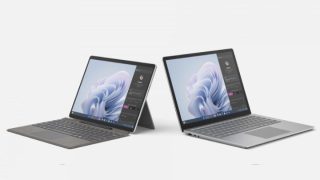
















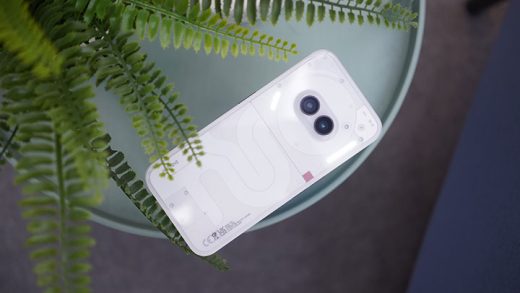
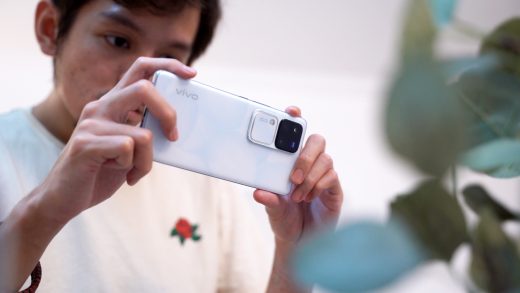
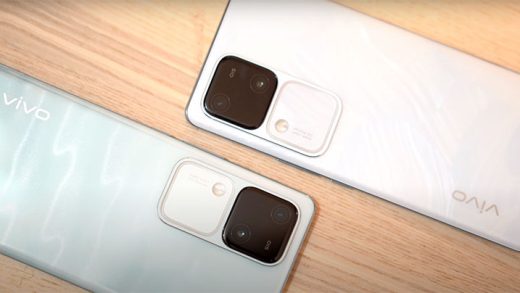





hi good day i would like to ask if how much the prize that drone? please reflay to my email thanks.
Nice review. I’ve gotten my mavic late november & flown numerous times. I’ve noticed gps signal drops (and actual gps signal failure) when flying in QC. But in provinces like Bataan for example, its rock solid.
How much po?
Yass, I heard need na daw ng license to fly these drones. Which one is commendable Mavic or Karma?
karma has been recalled by GoPro
Planning on buying one as well but from what i heard you need a license for this kind of drone. Is that accurate? Is there a learning curve in flying this vs. a toy quad copter or this is easier since it has auto mode. Thanks
You don’t need to have a license to fly this drone. Also, the Mavic Pro is definitely easier to fly than a toy drone since it has sensors and GPS. Get one! :)